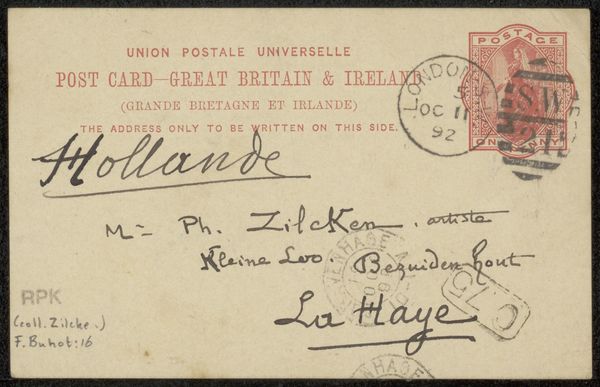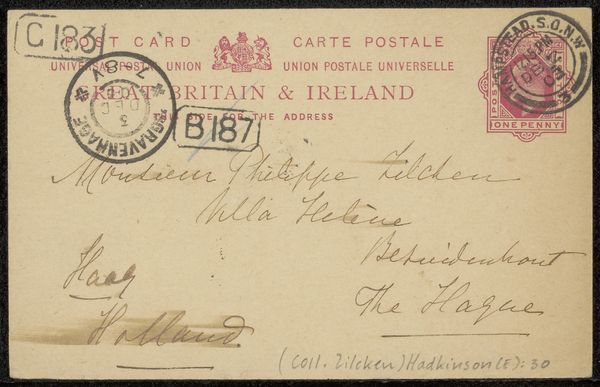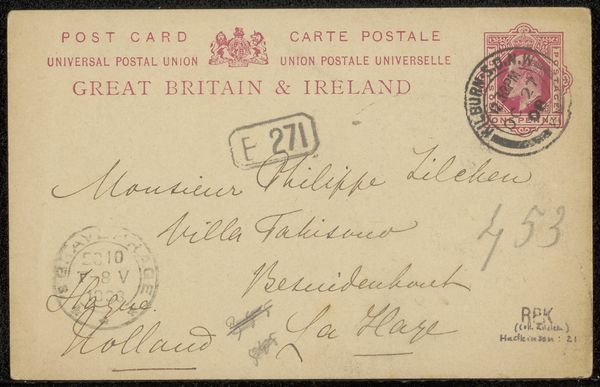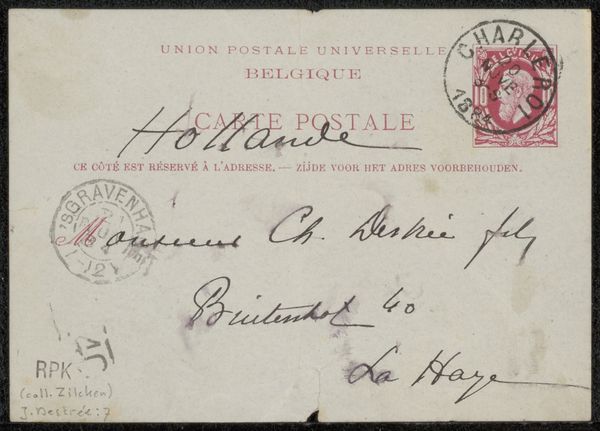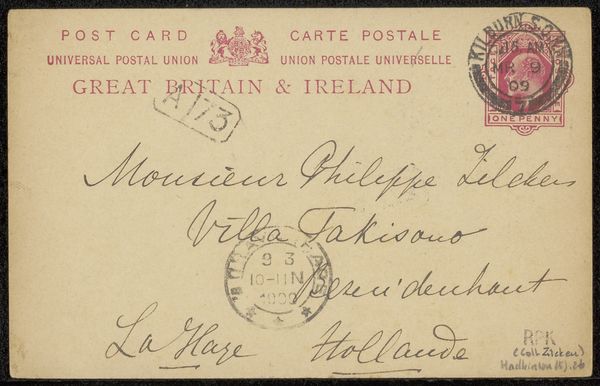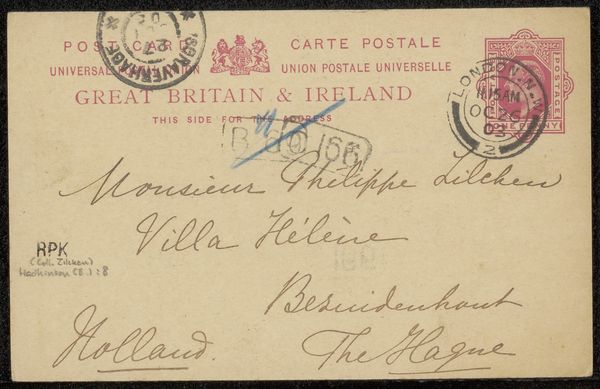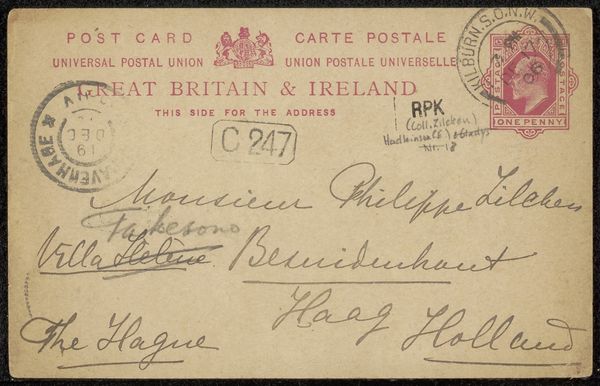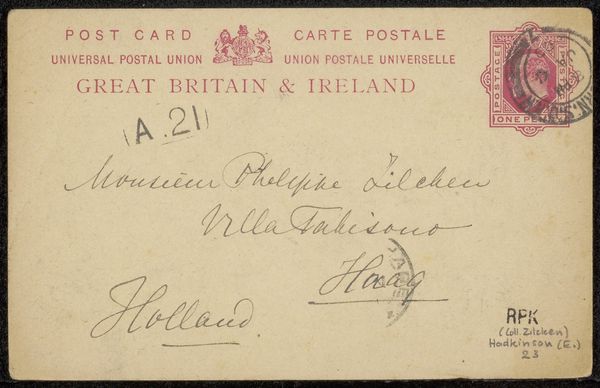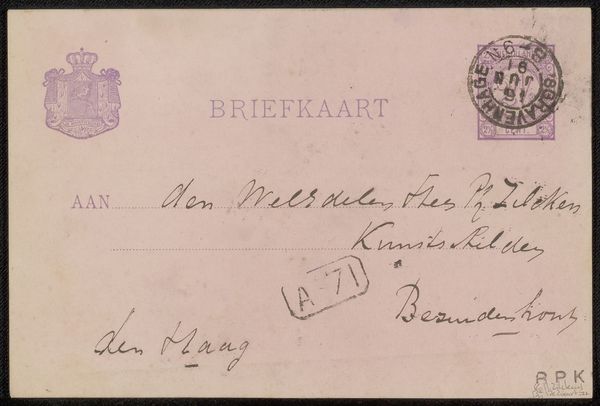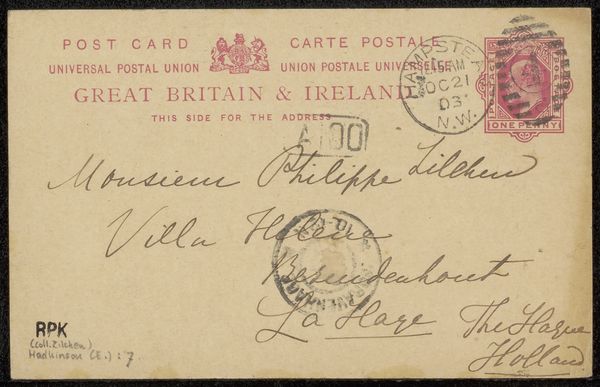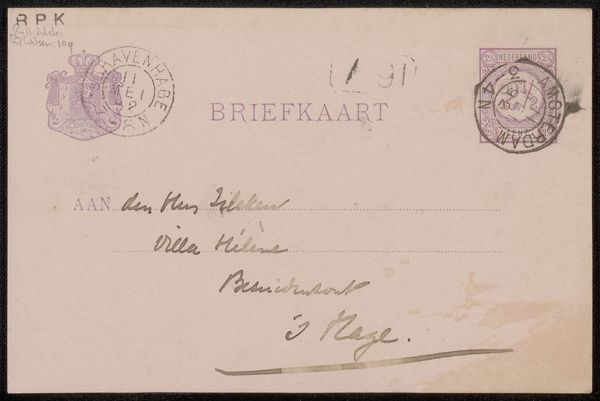
drawing, paper, ink, pen
#
drawing
#
hand-lettering
#
hand drawn type
#
hand lettering
#
paper
#
ink
#
pen work
#
pen
#
mail-art
Copyright: Rijks Museum: Open Domain
Editor: This is "Briefkaart aan Philip Zilcken" by François Thiébault-Sisson, dating back to the late 1890s. It's a pen and ink drawing on paper, a postcard actually. It feels very immediate and personal because you can see the handwritten text and markings. What strikes you about this piece? Curator: The materiality speaks volumes, doesn't it? It's more than just ink on paper; it's a remnant of a communication system deeply entwined with the sociopolitical fabric of the time. Postcards like this were crucial for maintaining networks, particularly within artistic communities. Consider the intimacy of this particular message – it creates an almost voyeuristic experience for the viewer, disrupting boundaries of public versus private. I wonder what stories the sender and recipient held, their positions in society? Editor: I see what you mean. It’s a snapshot of a specific exchange, almost like a conversation frozen in time. The "Union Postale Universelle" marking hints at a world becoming more interconnected, right? Curator: Exactly. It shows the increasingly globalized world in the late 19th century, though it is a world distinctly marked by colonialism and empire. Who had the privilege of sending and receiving such mail? How did factors such as gender and class play a role in access to this network? Consider too, that hand lettering was a common means of inscription before widespread typewriters. We see how communication, design and class were all intertwined. Editor: That’s a really interesting way to look at it. It's easy to see it as just a simple postcard, but understanding its historical context reveals so much more. Curator: Precisely! It pushes us to consider whose voices were amplified and whose were silenced within these networks. That tension makes this small object incredibly powerful, as it opens dialogues about historical structures that shaped artistic exchanges and social dynamics then, and whose legacy we can analyze today. Editor: I've never thought about a postcard having such deep implications before. Thanks for broadening my perspective!
Comments
No comments
Be the first to comment and join the conversation on the ultimate creative platform.
